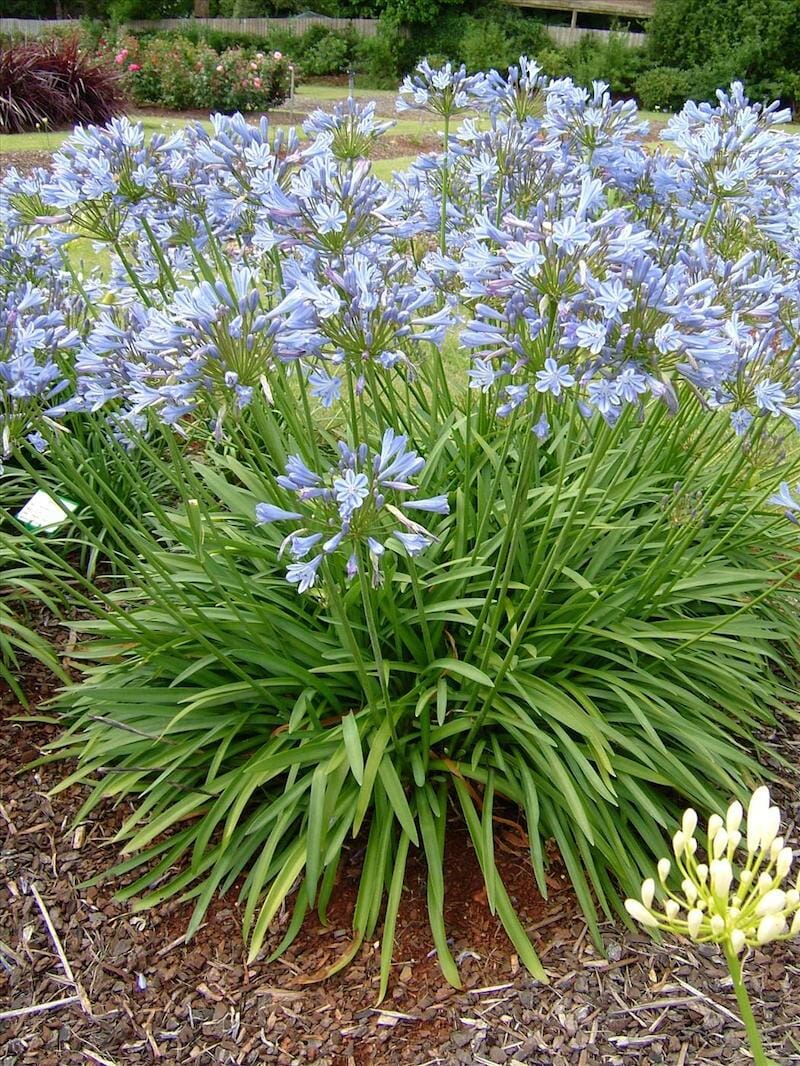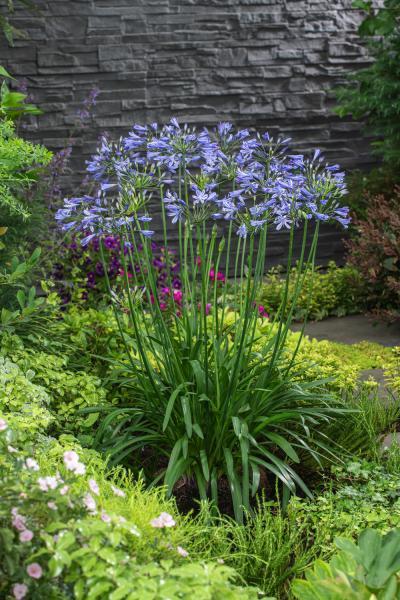Agapanthus Proliferation: Tips for Expanding Your Plant Collection
Agapanthus Proliferation: Tips for Expanding Your Plant Collection
Blog Article
Grasping the Art of Agapanthus Care: Crucial Steps for Healthy And Balanced Growth and Lively Blooms
In the realm of gardening, the cultivation of agapanthus stands as a gratifying undertaking for those who seek to nurture these sophisticated flowering plants. With their striking blooms and elegant vegetation, agapanthus has actually captured the attention of gardeners worldwide. However, accomplishing optimum growth and lively blossoms requires a nuanced approach that incorporates different crucial actions. From selecting the right range to understanding pruning strategies, the journey in the direction of cultivating thriving agapanthus plants is multifaceted and holds the crucial to opening the full capacity of these agricultural gems.
Choosing the Right Agapanthus Selection

When selecting the ideal Agapanthus selection for your garden, take into consideration elements such as climate suitability, bloom color, and development habit. In addition, consider the environment in your area to ensure the Agapanthus selection you select can prosper in your particular problems. Recognizing the growth practice of different Agapanthus varieties is essential for correct positioning within your yard.
Ideal Planting Conditions
Taking into consideration the optimal environmental demands is crucial for effective Agapanthus growing. Agapanthus plants are sensitive to cool temperatures and ought to be shielded from frost throughout wintertime months.
To make sure healthy and balanced growth and vivid flowers, plant Agapanthus light bulbs at a deepness of regarding 2-4 inches and area them 8-12 inches apart. Mulching around the base of the plants aids retain dampness and suppresses weed development.
Watering and Fertilizing Tips
Keeping correct moisture levels and giving crucial nutrients are crucial elements in the care program for Agapanthus plants. It is critical to strike a balance when it comes to watering Agapanthus. If overwatered, these plants choose consistently damp dirt however are at risk to root rot. Throughout the expanding season, water deeply once a week, making sure the dirt is well-draining to avoid waterlogging. In hotter environments or throughout periods of dry spell, even more regular watering may be essential to keep the dirt uniformly wet. However, reduce watering in the winter to avoid waterlogged conditions.
Feeding Agapanthus is essential for promoting healthy and balanced development and prolific flowers. Use a well balanced plant food, such as a 10-10-10 formula, in the early spring as new development emerges. Repeat this application every 6-8 weeks throughout the expanding period. Avoid too much fertilization, as it can lead to lavish vegetation at the expense of blossoms. Always adhere to the maker's instructions for appropriate dilution and application approaches. By following these watering and feeding tips, you can guarantee your Agapanthus plants flourish and generate lively, durable blossoms.
Trimming Techniques for Agapanthus
Pruning Agapanthus plants at the appropriate times and with proper methods is vital for keeping their health and advertising optimum development and blooming. The excellent time to trim Agapanthus is in late winter season or early spring before new development arises.
For flowered stems, wait up until the flowers have withered and afterwards trim them back to the base. This not just cleans up the plant's look yet likewise motivates the growth of brand-new blossom buds. Deadheading spent blossoms can likewise reroute the plant's energy into producing more blooms as opposed to setting seeds. Nonetheless, if you intend to accumulate seeds for breeding, leave some blossoms to completely dry and fully grown on the plant.
Bear in mind to utilize clean, sharp tools to make exact cuts and decrease the danger of presenting illness. Agapanthus. Regular pruning will certainly help keep your Agapanthus looking healthy and neat while making certain a plentiful display of gorgeous flowers
Managing Usual Bugs and Diseases
After guaranteeing proper trimming techniques for Agapanthus, it is important to resolve typical pests and conditions that can impact the health and wellness and vitality of these plants. Agapanthus plants are normally hardy yet can still fall sufferer to certain issues. One usual parasite that influences Agapanthus is the Agapanthus gall midge. This little, orange fly lays its eggs in the foliage, bring about altered growth and flower buds that fail to open. To battle this insect, trim and destroy any kind of damaged plant parts and take into consideration using insecticidal soap.
Another typical concern is fungal fallen leave try these out spot, which offers as dark sores on the leaves. To stop fungal diseases, make sure excellent air blood circulation around the plants, avoid above watering, and get rid of any type of contaminated fallen leaves quickly. In addition, Agapanthus plants can endure from root rot if they are grown in inadequately go to these guys draining dirt. To stop this, plant Agapanthus in well-draining soil and prevent overwatering. By being cautious and taking prompt activity versus diseases and pests, you can help your Agapanthus plants prosper and generate vibrant blooms.

Conclusion
To conclude, mastering the art of agapanthus treatment includes choosing the appropriate range, supplying optimal planting problems, appropriate watering and fertilizing, ideal trimming methods, and dealing with usual pests and conditions. By complying with these vital steps, you can guarantee healthy and balanced development and lively blooms for your agapanthus plants. Remember to consistently keep an eye on and keep your plants to advertise their general well-being and long life.
To guarantee healthy and balanced development and lively blossoms, plant Agapanthus light bulbs at a deepness of concerning 2-4 inches and area them 8-12 inches apart. By adhering to these watering and fertilizing tips, you can guarantee your Agapanthus plants thrive and create dynamic, long-lasting flowers.
One typical check my source bug that affects Agapanthus is the Agapanthus gall midget. Additionally, Agapanthus plants can endure from origin rot if they are planted in badly draining pipes soil. By complying with these vital actions, you can make certain healthy development and vibrant flowers for your agapanthus plants.
Report this page